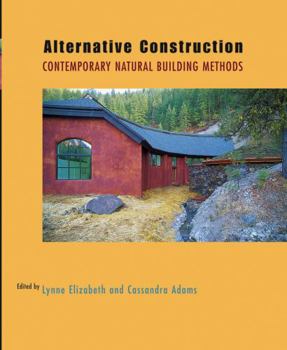Alternative Construction: Contemporary Natural Building Methods
Select Format
Select Condition 
Book Overview
Bei Standardbauprojekten kommen Materialien wie Stahl, Holz und Mauerwerk zum Einsatz. Alternative Bausysteme verwenden natürliche Baumaterialien wie z.B. Adobeziegel, Lehm, Bambus und Strohballen. Richtig eingesetzt sind diese natürlichen Materialien ebenso stabil und langlebig wie ihre traditionelleren Gegenstücke, jedoch ohne negativen Einflu auf die Umwelt. Dies ist das erste Buch auf dem Markt, das eine breite Vielfalt alternativer Bausysteme erschöpfend behandelt. Ein umfassender Leitfaden, der den neuen Trend der Ökobauweise sehr ausführlich diskutiert: Jedes Kapitel widmet sich einer spezifischen Baumethode und erörtert für jede Methode u.a. folgende Aspekte: kurze Geschichte, bio-regionale Eignung, Vorteile für die Umwelt, charakteristische Eigenschaften, Konstruktionstechniken, Anwendungen und Vorschriften. Mit über 100 Fotos zu Konstruktionsverfahren und fertigen Bauten sowie 70 Abbildungen zu Wandkonstruktionen. Die einzelnen Kapitel wurden von Experten der jeweiligen Baumethode verfa t, so z.B. das Kapitel über Adobeziegel von Michael Moquin, Herausgeber des "The Adobe Journal". Eine Pflichtlektüre für jeden Architekten, Bauunternehmer und Bauherren mit Umweltbewu tsein. (y05/00)
Format:Paperback
Language:English
ISBN:0471719382
ISBN13:9780471719380
Release Date:March 2005
Publisher:Wiley
Length:416 Pages
Weight:1.85 lbs.
Dimensions:1.0" x 7.6" x 9.1"
Customer Reviews
3 ratings
Very nice overview of options.
Published by Thriftbooks.com User , 16 years ago
I haven't done anything but dream yet, but my friends borrowed the book and used it extensively in planning their passive solar home. Like others have mentioned it does not have explicit instructions for any of the buildings, but has enough information to help you choose your direction.
Alternative Construction
Published by Thriftbooks.com User , 24 years ago
This is an excellent resource book for those seeking to learn more about alternative construction methods and materials. It introduces the reader to straw bale, cob, light straw clay (a marvelous material), rammed earth and many other ecologically appropriate materials. It doesn't provide enough detail to help you build with these materials but it will help you choose which might be good for you and guides you to some of the key people and resources. The chapter on natural conditioning of houses is outstanding and provides performance estimates for a variety of building materials in cities as diverse as Denver and El Centro. david bainbridge is one of the authors of the Straw Bale House and a pioneer in passive solar heating and cooling.
Environmental friendly building material
Published by Thriftbooks.com User , 25 years ago
A good informativeand worth to keep in your personal library





